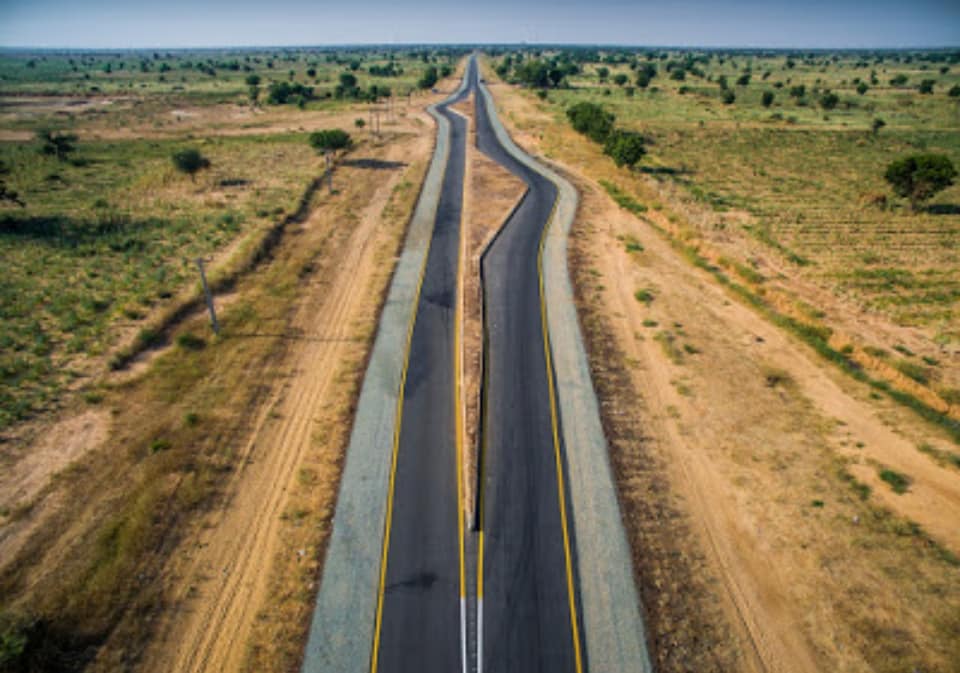As Sukuk rescues key project

Prospects for dualisation and completion of the outstanding five sections of the strategic Kano-Maiduguri highway were brightened recently through plans by the Federal government to deploy part of the N100 billion Sukuk Bond to it. This was revealed by the Director of Highways (North-East) in the Federal Ministry of Power, Works and Housing, Mohamad Rufai, during a project inspection tour at Jakana Borno State.
Sections affected by the dispensation include Section Two: Dutse-Kwanar Huguma in Kano State (142 kilometres); Section Three: Azare-Potiskum in Yobe State (106.341 kilometres); Section Four projects: Damaturu to Maiduguri (145.109 kilometres); while Section Five corridors are along the Potiskum – Damaturu axis with 102.075 kilometres. The projects are being executed by a consortium of contractors comprising the Chinese firm CCECC Nigeria Limited, Mothercat Nigeria Ltd, Setraco Nigeria Ltd and CGC Nigeria Ltd, each of which is working on designated sections and have attained significant levels of progress.
Among the factors credited for the success of the project was the Sukuk Bond, which was recently introduced in Nigeria as an alternative funding option for addressing the country’s infrastructure deficit estimated at over $13 trillion. Sukuk is an Islamic funding option for projects of any kind, as long as such do not violate the tenets of Sharia. It became imperative for the Nigerian government to adopt, following the need to bridge the massive infrastructure gap, in the light of dwindling oil revenues in recent times. With the endorsement of the scheme by Mohamed Rufai with reference to the Kano Maiduguri Road, the Sukuk scheme could not have enjoyed better commendation.
The introduction of the Sukuk scheme came after some debate while the actual implementation also suffered almost a ten-year delay due largely to the challenge of insurgency induced insecurity, in some of the areas where the scheme was initially designated for. However, the successes registered with its implementation have established it as a viable a funding option.

Meanwhile Sukuk also offers some lessons with respect to the history of serial failures in funding public sector projects and infrastructure in the country, especially as pertains to the resort to other funding options such as statutory allocations and foreign loans. Clearly the sheer evidence of successes recorded in projects funded through Sukuk even where other more traditional funding had been deployed makes a strong case for Sukuk in Nigeria. Some of the advantages associated with Sukuk are its more relaxed terms and conditions for bond subscribers as it offers no interest rates and provides relatively long periods of gestation of the bonds.
However, its novelty and spare scope of implementation are not enough to prove its ultimate advantage over the other alternatives. Its span of implementation over projects is expected to span the entire country, even as it still has some technical barriers to overcome in order to enjoy wider acceptance.
Meanwhile, stakeholders in the country’s infrastructure development are concerned that government may start seeing the Sukuk scheme as replacement to the more traditional funding options and lapse into complacence and abuse of the scheme. Fears in this respect are not unfounded as the very disposition towards abuse of project funds is yet to be addressed holistically by government at various tiers.
Given that Sukuk is selective in its scope of implementation the government needs to use its intervention as a stop gap measure to develop its capacities in project funding administration, especially with respect to valuation of works, prudence in funds administration and accountability of project managers.
Finally, a surefire approach to maximizing the dividends from the Sukuk scheme is for the government to revamp its fiscal regime and facilitate a more compatible convergence between it and more traditional funding options. (Daily Trust)

